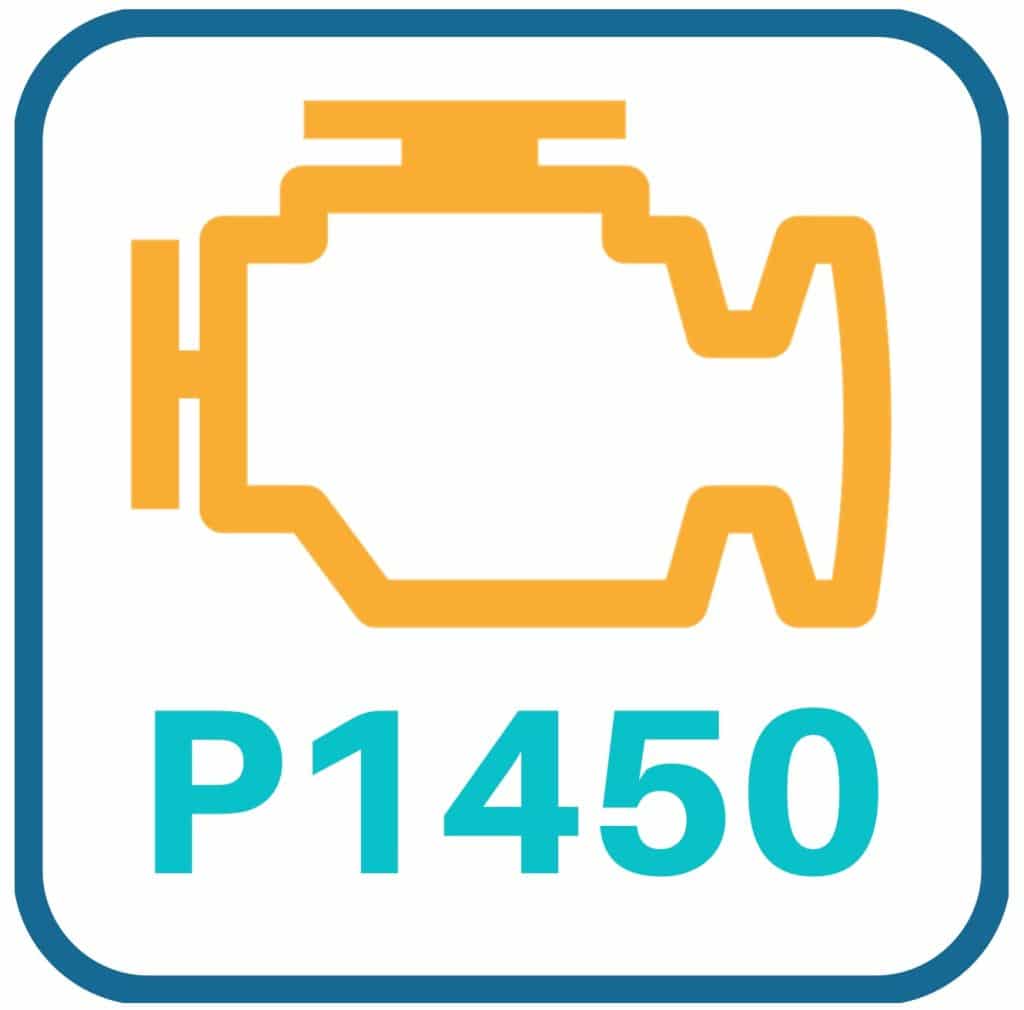P1450 is a manufacturer-specific trouble code. In the case of Ford-made vehicles (such as the Ford Escape), it indicates that the pressure in the fuel tank is not bleeding up to the engine. This code is very common, and not a breakdown risk when it appears by itself.
Far and away, the most common cause of P1450 in the Ford Escape is a bad purge valve (there’s a section on how to test them below).

Note: P1450 is a manufacturer-specific code, and it has different meanings depending on who made the vehicle. This article is for Ford-made vehicles only.
P1450 Definition: Unable To Bleed Up Fuel Tank Vacuum
Your Escape’s EVAP system uses a purge valve to draw fuel vapor from the gas tank. The fuel tank pressure sensor sends the tank pressure value to the PCM.
When the vacuum pressure value inside the fuel tank isn’t being relieved, or the value isn’t what it is supposed to be, P1450 will be thrown.
Ford Escape: P1450 Symptoms
There aren’t any noticeable symptoms associated with P1450 in the Escape. It should still run and drive fine with the check engine light on. However, it will fail an emissions test.
Escape P1450 Causes + Diagnosis

There aren’t many issues that will cause P1450 in the Ford Escape. The most common one is a bad EVAP purge valve. There are a couple of different ways that you can test it.
EVAP Purge Valve
Ford uses two types of purge valves. One type bolts directly into the engine, and pulls vacuum from the bottom. The other type has a vacuum line that always has a vacuum going to it, and doesn’t connect directly to the engine.
Which type of purge valve your Escape has is going to depend on the model year and engine equipped.
There are a few different ways to test the EVAP purge valve at home:
1. Finger Test (Quick)
The finger test works fine for either type of purge valve:
- Unplug the wiring harness from the purge valve.
- Next, unplug the vacuum line that runs from the purge valve to the gas tank (on the purge valve side).
- With no instruction from the powertrain control module, it should be closed.
- Put your finger where the vacuum line should go. If you feel suction, the purge valve is stuck open and needs replacing.
Here’s a video where this test is being performed:
2. Vaccum Pump Test (Very Accurate)
If the purge valve draws a vacuum directly from your Escape’s engine (no line in), you can do this test, but you’ll need to remove it first. If it has a vacuum line in and out you can do this with it bolted to the vehicle.
The EVAP purge valve opens up and uses engine vacuum to pull fuel vapor from the gas tank in order to reduce emisssions. This is done for emissions purposes and doesn’t affect your ability to drive the vehicle.
When your Escape is not running, the purge valve should hold vacuum on the upstream side. You can use a vacuum pump to quickly test whether or not it is stuck open. The video below shows exactly how you’d go about doing so.
Other Causes
While the purge valve is the most common cause of P1450 in the Ford Escape, it’s not the only one.
- Bad fuel tank pressure sensor
- Crushed/crimped hose in between the fuel tank and canister
- Overfilling the gas tank
Conclusion
With P1450 in the Ford Escape, the most common cause is a bad purge valve. It’s easy to diagnose, and cheap to fix. If it passes the test, look for a crimped EVAP line coming from the fuel tank, or a clogged charcoal canister. This can happen a lot after filling the fuel tank. Good luck!

